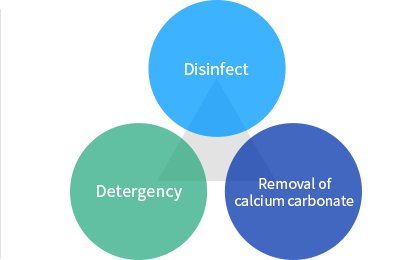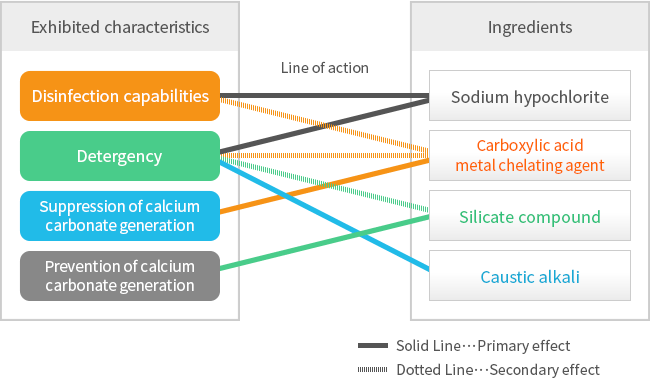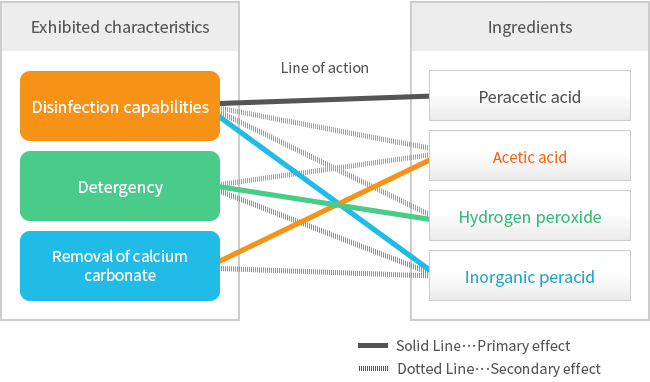The points of choosing disinfectant cleaning agent for hemodialysis
The points of choosing disinfectant cleaning agent for hemodialysis

There are three essential requirements for disinfectant cleaning agent for hemodialysis machine.
In the past, it used to be the mainstream to use sodium hypochlorite for the purpose of disinfection and cleaning, and acetic acid for the purpose of removing calcium carbonate scale.
However, it has been frequently reported that a combination of sodium hypochlorite with acetic acid gives rise to a phenomenon in which proteins, polysaccharides, fats, and other organic substance stains accumulate in the hemodialysis machine line.
Now, disinfectant cleaning agents for hemodialysis machines and calcium carbonate dissolving agents are commercially available and designed to counter the disadvantages of sodium hypochlorite and acetic acid.
Affront a background of increasing interest in cleaning dialysate resulting from the popularization of high-performance membranes (HPM) and expansion of online hemodialysis filtration (HDF), an increasing number of institutions are using disinfectant cleaning agents for hemodialysis machines to keep their instruments clean all the time.
It is also necessary for each institution to select optimum cleaning agents and washing methods by analyzing and evaluating what is currently available.
We will make the proposal best suited to your institution based on our extensive research, experience and achievements which includes developing the first disinfectant cleaning agent for hemodialysis machine in Japan.
Major types of disinfectant cleaning agent for hemodialysis
● Chlorine-based disinfectants
Chlorine-based disinfectants are products that have sodium hypochlorite as the active ingredient and are specialized for use with hemodialysis machines. They prevent calcium carbonate generation, enhance detergency, and suppress calcium carbonate generation.
[Features]
- Potent detergency and disinfection capabilities that work on proteins, fats and polysaccharides.
- Possible reduction of corrosion in component as compared to sodium hypochlorite.
- Suppression of calcium carbonate generation by metallic chelate effect.
[Roles]

Peracetic acid-based disinfectants consist mainly of 3 components: peracetic acid, hydrogen peroxide, and acetic acid. The concentrations of the respective ingredients may differ and there may be an extra component depending on the manufacturer and product.
We have improved the disinfection capabilities and detergency by adding inorganic peracid.
[Features]
- Disinfection, washing and removal of calcium carbonate are possible with a single product.
- There is less decrease in sterilization capacity in the presence of organic matter and efficacy is exhibited also to sporular bacteria.
- Corrosion removal effect is exhibited.
[Roles]

Calcium carbonate dissolving agent is an alternative product to acetic acid, as it contains citric acid or malic acid as the main ingredient. It does not have a pungent odor like acetic acid does, and it suppresses component corrosion. There are products capable of corrosion-removal in addition to calcium carbonate removal.
[Features]
- Satisfactory removal of calcium carbonate.
- Excellent operability without an unpleasant odor.
- Suppression of corrosion in metals and high-molecular components.
